Tutorial
This site's main focus has shifted to our Gamevideoarchive which I'm trying to get sorted chronologically, thus completing certain years. That means longplays from years 1982-1984 are no longer required nor incorporated.Be sure to have read my guide below on what makes for a good longplay before sending in your own. Let me say that again: just rushing through a game isn't enough! Recording a game is quite likely to be hard work if you intend it to look good. Newbies should generally record the first five minutes of a game and mail it to me so I can give tips on improvement where necessary. This will save applicants quite some time in case it would not be accepted. I prefer to have no video of a game over a boring one, so better send in 1 or 2 really good instead of 20 mediocre ones. There are a few ppl who can do both but they've invested considerable more time into each game than someone rushing through it.
Our videos are recorded using Vice history files which are WinVice-internal data that allow you to record your progress in a game - in picture and sound. Later you can watch these files like a movie, showing others how you were able to perform in this game. The immense benefit over standard videofiles is, that these are often just 2-3 MB big and thus much easier to send via web oder email than large AVI- or MPEG-files.
However, for proper playback you'd need the exact same version of both WinVice and the game that longplay was created from ('played'), otherwise most likely errors will occur. History files were introduced in Vice 1.15 but you should always use the latest emulator version available, currently 1.22.
Creating history-files:
Since some default settings are not suitable for recording history files you should adjust them as soon as you start WinVice emulator:Options > Virtual Device Traps: off (not needed anyway unless you play from .t64 oder .prg)
Settings > Drive Settings > Idle Method: None.
With that out of the way load the game you want to record the longplay of. To do so, point to the upper bar of the Emulator-window and select 'Autostart disk/tape image...' followed by the folder in which our C64 games reside and single click it. Usually, double-clicking the desired file is enough to load/start the game. Should this fail, use the directory in the lower area of the window to start the game (double click the program name here).
If this does not start the game at all, the .d64-file is obviously damaged. Try to obtain the game from another source or try to get a different version.
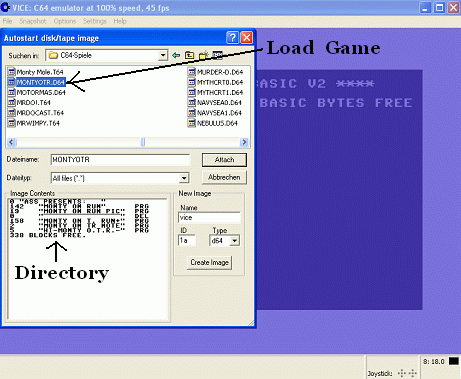
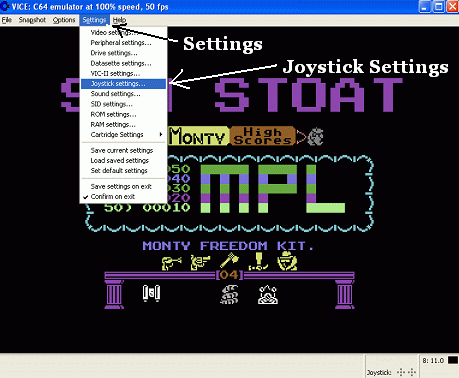
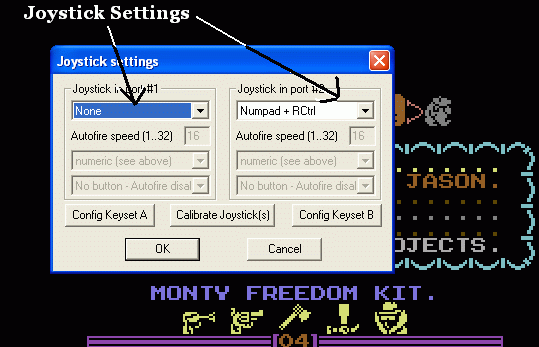
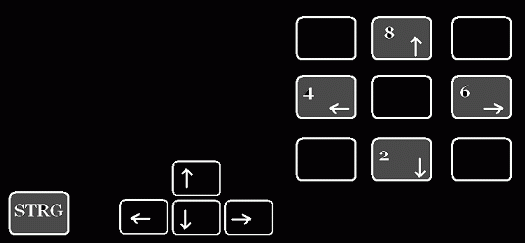
Now for the recording: If we want to save our progress in the game, we use the already mentioned "History"-function. Select "Snapshot" from the upper menu bar followed by "Select History files/directory" from the pull-down-menu which opens the window where you can enter the name of your history file.
IMPORTANT: You MUST use "_start" at the end of the gamename, otherwise the emulator will NOT recognize the file and NOT write to it rendering your recording work completely useless.
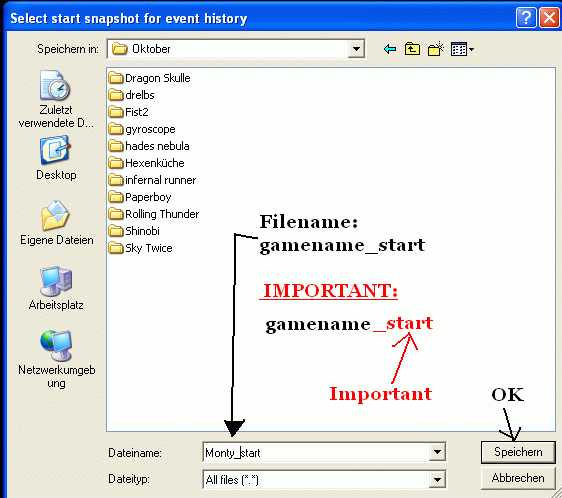
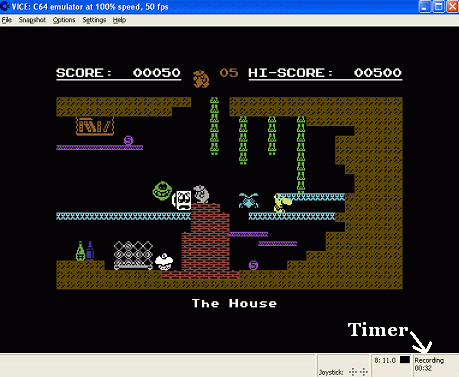
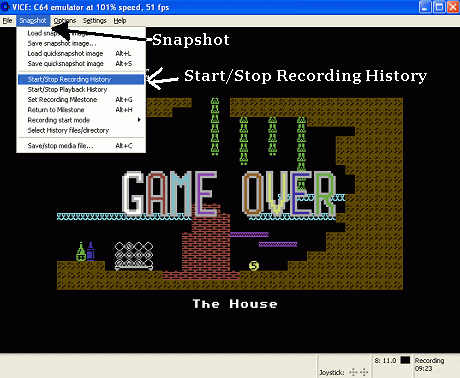
- during long recording sessions it is recommended to stop recording from time to time and use another file. The practical upshot of which is that not all of your game is lost should there be some error in your file. Most errors have been corrected since WinVice 1.14 but they have not yet been wiped out completely.
- make a copy of your original history file. It will drive you nuts, when you want to continue a (so far) well done history-file, but you notice it's trash because of some error you cannot figure out where it came from...
- you can toggle the speed of the emulator (see "options"-menu) to cut down loading speeds. You will not see this in your final video, the recording function automatically adjusts to the emulator speed.
For example: if you set the speed to 200% while recording and play back that recording later, it will run at a normal 100% speed - you won't notice the increased speed.
Guide on making a good video
I'd first like to thank the team behind the WinVice emulator. Without the features offered by it now, many of the videos would not have been possible (or at least not in the same quality). I would also like to thank all the people who already submitted "longplays" or will do so in the future. The number of videos offered is much more colorful and comprehensive than I imagined in early 2003.Unfortunately a lot of the "history files" turned in are not suitable for a "longplay". In order to avoid unneccesary efforts, I've written this guide. Of course it's no guarantee for a well-done "longplay" but it can help eliminate some of the most common mistakes.
- Emulators and game versions
- Always use the latest version of WinVice! Since histories can be incompatible between WinVice versions, it could happen that your histories are not usable.
- Use an unchanged original version of the game to be recorded, without cheats, visible references to cracks or bugs. References to cracks in game intros can be corrected but if they are visible within the game, the history is useless. Cracks by Nostalgia or Remember are usually reliable sources.
- Use an English version if available. Some games have been translated into other languages, but we don't want to exclude anybody from the videos based on language problems.
- An accomplished video
- The "longplay" for a certain game should be done by someone with skill at it. Choose a game that you know by heart. When I see a full run of the game, I assume that the player knows the entire game and has a firm grip on it. Histories are useless if the player obviously uses save points (i.e. freeze states) or is still in the process of exploring the game.
Histories that are played "safe" (i.e. by using a very careful and slow approach) are not very exciting to watch. If you choose a game you don't know very well yet, finish it a couple of times first in order to know what to do exactly. Search the internet for hints or better solutions. This may sound a bit harsh, but it's not enough to just finish the game, the gameplay presented has to look good. Which also means you gotta be fast. The difference however to a speedrun is that we do not count frames nor eploit bugs in the game as shortcuts but do keep cutscenes and bonus levels. - Don't jump / shoot / attack / whatever if not necessary - even if the animation looks great.
- Don't get side-tracked with unimportant things - if you just follow an enemy to kill him, not to get on in the game, it will unnecessarily lengthen the video. Don't miss out on bonus items if you don't have to go out of your way to get them, but the idea is to accomplish the game as fast as possible.
- Getting lost doesn't look good on video (it shouldn't happen because I presume you are familiar with the game, see 2 a.). If you do anyway, return to your last milestone.
- Using death as a shortcut isn't preferred either. This might make sense with speedruns, but the "longplay's" main purpose is to show a good solution for the game and to showcase some of its primary features.
- Avoid taking advantage of bugs in the game (faulty collision detection or such), since it might be mistaken for a cheat. Repeat scenes you only finished due to bugs.
- Minor shortcuts can be used if you don't leave out too much of the game. This is admittedly a pretty flexible rule. But the viewer should be able to get a idea of what the game is like. Don't use level jumps in short games. They are o.k. in longer games such as Krakout or Bubble Bobble.
- Do not interrupt cutscenes - they are an integral element of the game and should be part of the video. The same goes for short tunes after you finish a level. It's always possible to shorten / cut this stuff later if the video turns out too long. Of course it's not possible the other way round.
- Emulator tools & helpers
- WinVice allows you to save the game during recording (see tutorial atop this page). It's not only allowed to use this feature, it's strongly encouraged. The "longplay" project is not about competing in gaming skills (though they are a requirement, see above), it's about presenting the game and a good solution to it. If you think you can do part of the game better, reload your save state and try again for a better result.
- A great feature of WinVice is the emulation speed control. No matter which speed you play the game at, the recording is always at played back at normal speed. It's okay to reduce the speed A BIT (85 to 90 %) but not too much since this would show in the video. The final result would look a bit more elegant, but not like a cheap cheating affair.
- As opposed to previous versions the save function seems to work flawlessly. Usually one was ill advised to do any joystick movements while saving but this appears to have been fixed. In any case, the use of the save function should not be noticable during playback, seeing the player stop in it's tracks to set a savepoint renders the longplay unusable!
- As of WinVice 1.22 the option to "Overwrite Playback" works too. It's been featured for a while now but sometimes could destroy an entire history file. Recently however there have been none such flukes so here's a short explanation on how to use it.
In case you messed up a savepoint you can overwrite it by selecting "Snapshot > Recording Start Mode > Overwrite Playback". Playback your history file up to the point where you want to continue recording and select "Start/Stop Recording History". WinVice will continue recording seamlessly overwriting the messed up parts. Immediately set a new savepoint and also do not forget to make a backup of your history first.
Some more tips
Really long gamesI'm of course aware that it would be impossible to record a video of Elite completely played through. The way to go would be a montage of 20-30 minutes length showing what the game is about as has been done with our The Bard's Tale video. The player could add an audio commentary to explain what's going on. Games that loop endlessy like Wizard Of Wor or Airwolf are usually played to the beginning of the second loop or to the point where nothing new happens.
Text adventures & RPGs
Text adventures usually do not fit into the Gamevideoarchive. Two of the few exceptions are The Pawn and Fish, because they are among the most popular of this genre and excelled at graphics in their time.
Compared to action titles the player should take his time to record a video. This does not mean getting lost or stuck on some riddles forever. However, the viewer should be able to read the entire text so it's better to keep it on for too long rather than too short. If necessary cutting some scenes is easy as opposed to the other way round. So take your time to examine stuff or talk to NPCs, the viewer wants to get an idea of why you're doing what you're doing.
It's generelly a good idea to record several history files instead of one. Usually I start a new one every 30-40 minutes of gameplay which saves time in case I need to fast forward or when editing.
Games, the viewer just doesn't get.
I'll be adding text info panels to games people can't get a hang of by simply looking at. With complex games this can be a lot of panels so the player is encouraged to add an english audio commentary instead. When in doubt about the necessity just ask me, I tend to be slow on the uptake when it comes to really complex games which makes me a good point of reference ;)
It's also advisable not to close menus to fast so as to let the viever comprehend what you are doing. Two examples for extended commentary are Gates Of Dawn (info panels) and The Bard's Tale (audio commetary).
Games using Artificial Intelligence
Using our regular guidelines on recording is counterproductive with strategy, sports or beat-em-up games cause the heavy use of save points makes the CPU opponent look stupid. This can go so far as to using milestones to cancel out each and every otherwise successsful attack on the CPU opponent's part. Avoiding negative random elements also messes up a game's impact a lot so it's better to save less or not at all. A good example of how NOT to do it is my old longplay of International Karate. The opponent doesn't get a chance to counter which makes him look completely inapt which does not do the game justice as it's got a pretty decent AI.
Another example of how NOT to do it is the longplay of Super Pipeline 2. It's done perfectly by the book which makes it appear easy and designed badly. Usually the enemies destroy the pipes pretty often so a lot of repairing has to be done to complete a level. However it's not in the video cause most of it has been cancelled out during recording. The extensive use of save points practically eradicated elements of the game because the player followed the rules too strictly. Of course it's a fine line to determine when a recording is too well played or not so while it works for the majority of games, being less strict can work wonders.
A good example of this is my Archon longplay. I rarely save the game to allow the CPU to make it's move. I'm not just rushing through the game but let the viewer get an idea of what the CPU opponent is capable of. Despite not being a C64 game the same goes for my Super Street Fighter 2 longplay. In theory it's easy to save in between a beat-em-up often enough to make the CPU look like crap but that's no way to present a game. Which is why I saved only in between the fight to show that the opponent is more than cannon fodder.
